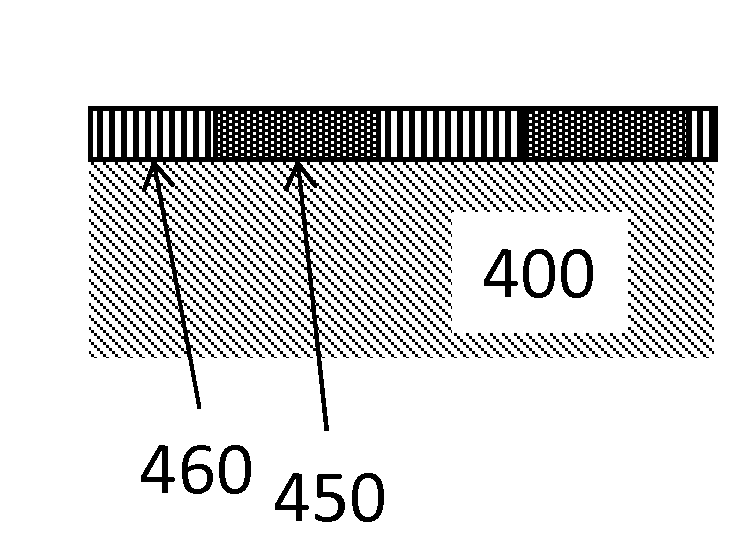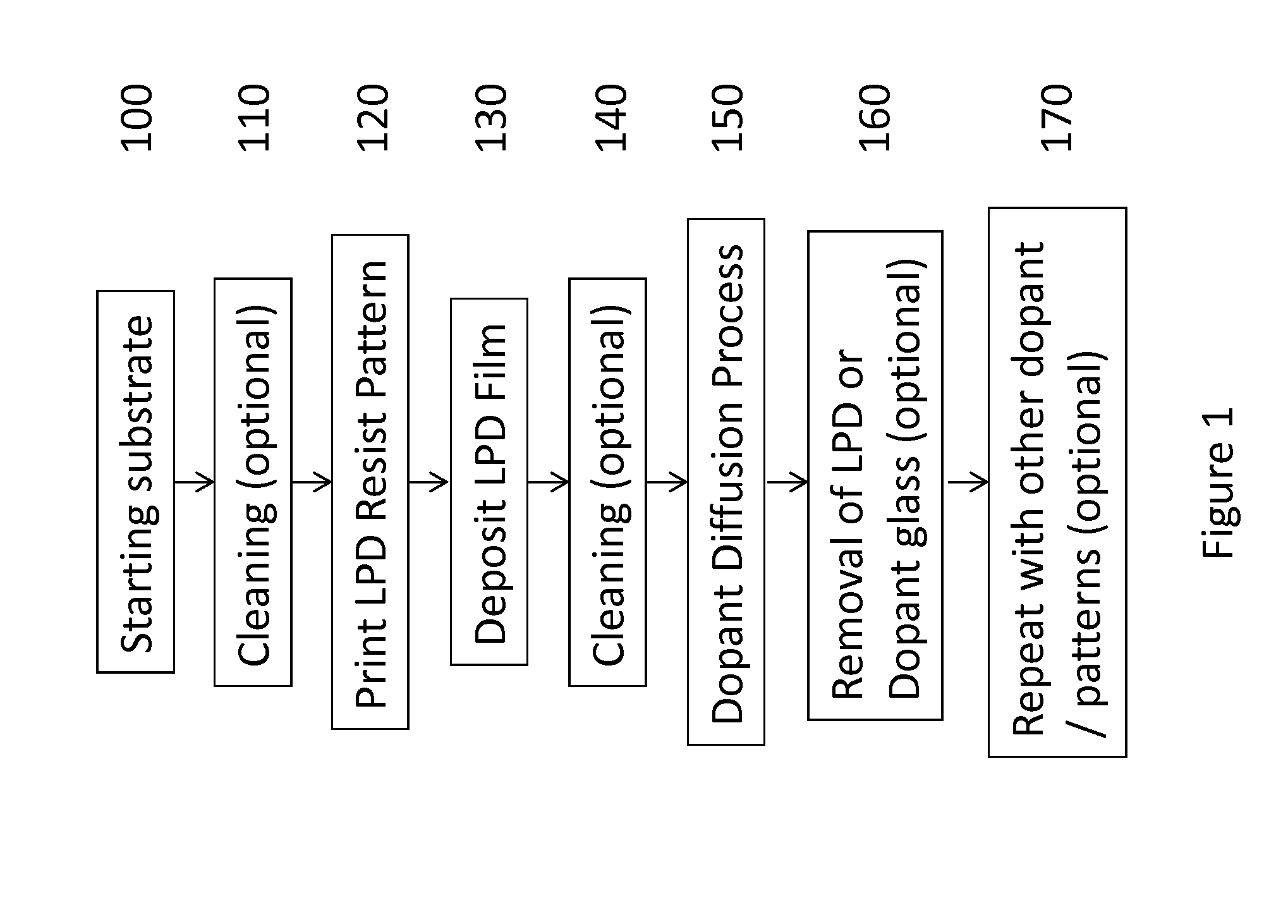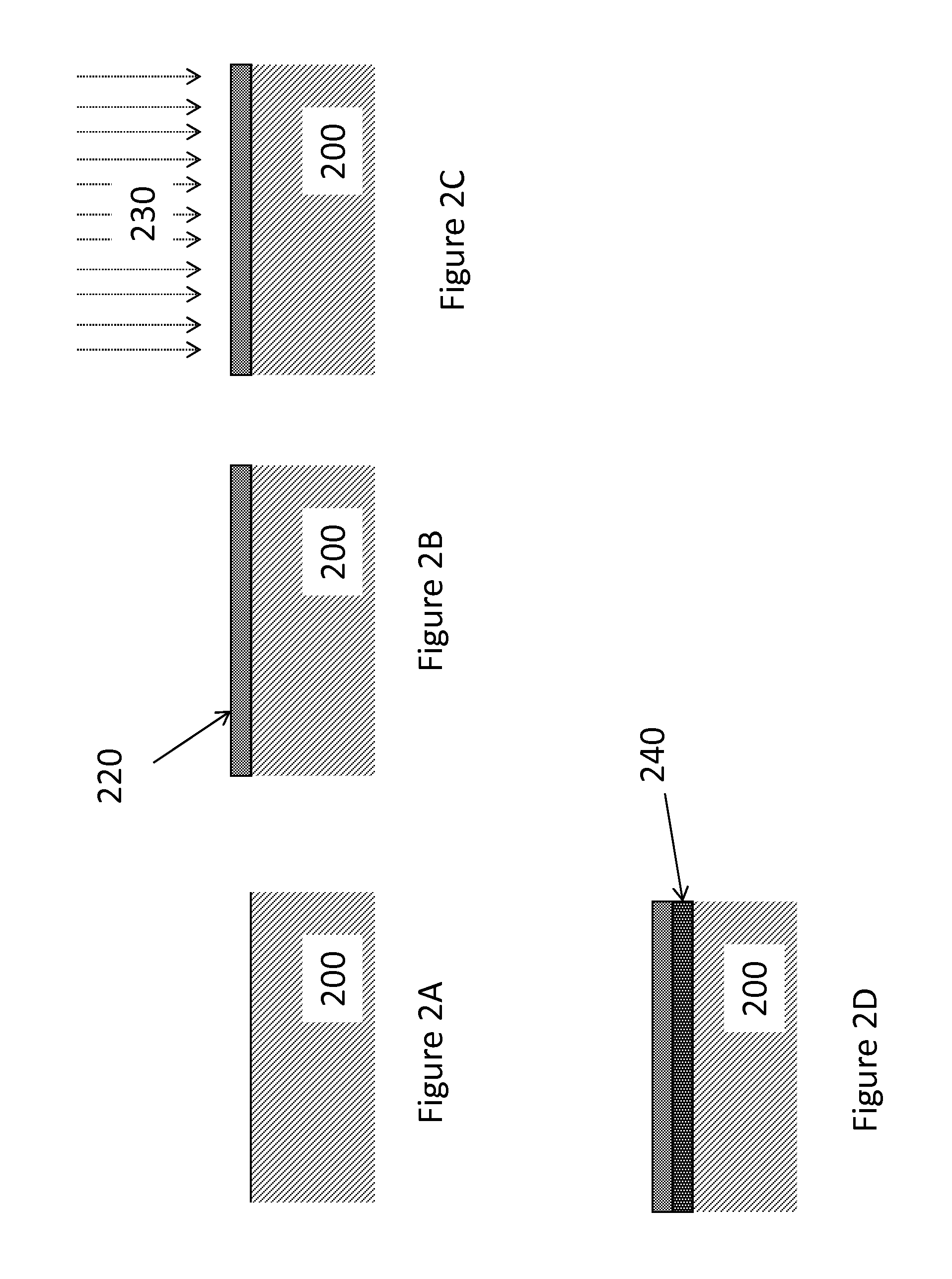Method for Patterned Doping of a Semiconductor
- Summary
- Abstract
- Description
- Claims
- Application Information
AI Technical Summary
Benefits of technology
Problems solved by technology
Method used
Image
Examples
experimental example
[0043]The following examples are included to demonstrate particular aspects of the present disclosure. It should be appreciated by those of ordinary skill in the art that the methods described in the examples that follow merely represent illustrative embodiments of the disclosure. Those of ordinary skill in the art should, in light of the present disclosure, appreciate that many changes can be made in the specific embodiments described and still obtain a like or similar result without departing from the spirit and scope of the present disclosure.
example 1
[0044]This example demonstrates the capability of a patterned film of LPD silicon dioxide to act as a diffusion barrier for a POCl3 dopant diffusion.
[0045]125 mm×125 mm p-type silicon wafers with pyramidal surface texture were cleaned by dipping in 1:10 HF:Water for 10 minutes followed by extensive rinsing in deionized water.
[0046]A polymer resist ink is formulated by dissolving a polymer composed of approximately 88% vinylbutyral, 11% vinylalcohol, and 1% vinylacetate monomer units in butoxyethanol at 17 weight% polymer. A test pattern of polymer resist ink is screen printed on the wafers followed by baking at 70° C., producing areas on the wafers with and without coverage of the polymer.
[0047]An LPD stock solution is created by adding 70 g of high purity fumed silica per 1 liter of 35 wt % H2SiF6 aqueous solution. The mixture is stirred for 12 hours at room temperature, at which point excess silica is filtered out, yielding a saturated solution. For a given deposition, 1100 g of t...
example 2
[0052]This example demonstrates the capability of a patterned film of LPD silicon dioxide to act as a diffusion barrier for a spin on dopant diffusion.
[0053]Silicon wafers are processed as in example 1 to yield patterned LPD silicon dioxide films. Instead of a POCl3 based dopant diffusion, the wafers are spin coated with Honeywell P-8545 spin-on phosphorous dopant. After a 250° C. bake for 15 minutes to ensure a dry coating, the coatings are annealed at 950° C. for 16 minutes in air in a rapid thermal processor.
[0054]Resistivity of the wafers was measured using a four point probe test. The resistivity on areas where the LPD was absent is labeled Rc, and the resistivity in areas where LPD is present is labeled Re. Table 2A shows the results of these measurements for three samples that had received different LPD treatments.
TABLE 2AApprox SiO2thicknessSampleLPD Treatment(nm)Rc (ohm / sq)Re (ohm / sq)E2-145° C. / 8 minutes1027.1 (n-type) 48.7 (n-type)E2-245° C. / 15 minutes1837.1 (n-type)150.2 ...
PUM
 Login to View More
Login to View More Abstract
Description
Claims
Application Information
 Login to View More
Login to View More - R&D Engineer
- R&D Manager
- IP Professional
- Industry Leading Data Capabilities
- Powerful AI technology
- Patent DNA Extraction
Browse by: Latest US Patents, China's latest patents, Technical Efficacy Thesaurus, Application Domain, Technology Topic, Popular Technical Reports.
© 2024 PatSnap. All rights reserved.Legal|Privacy policy|Modern Slavery Act Transparency Statement|Sitemap|About US| Contact US: help@patsnap.com










